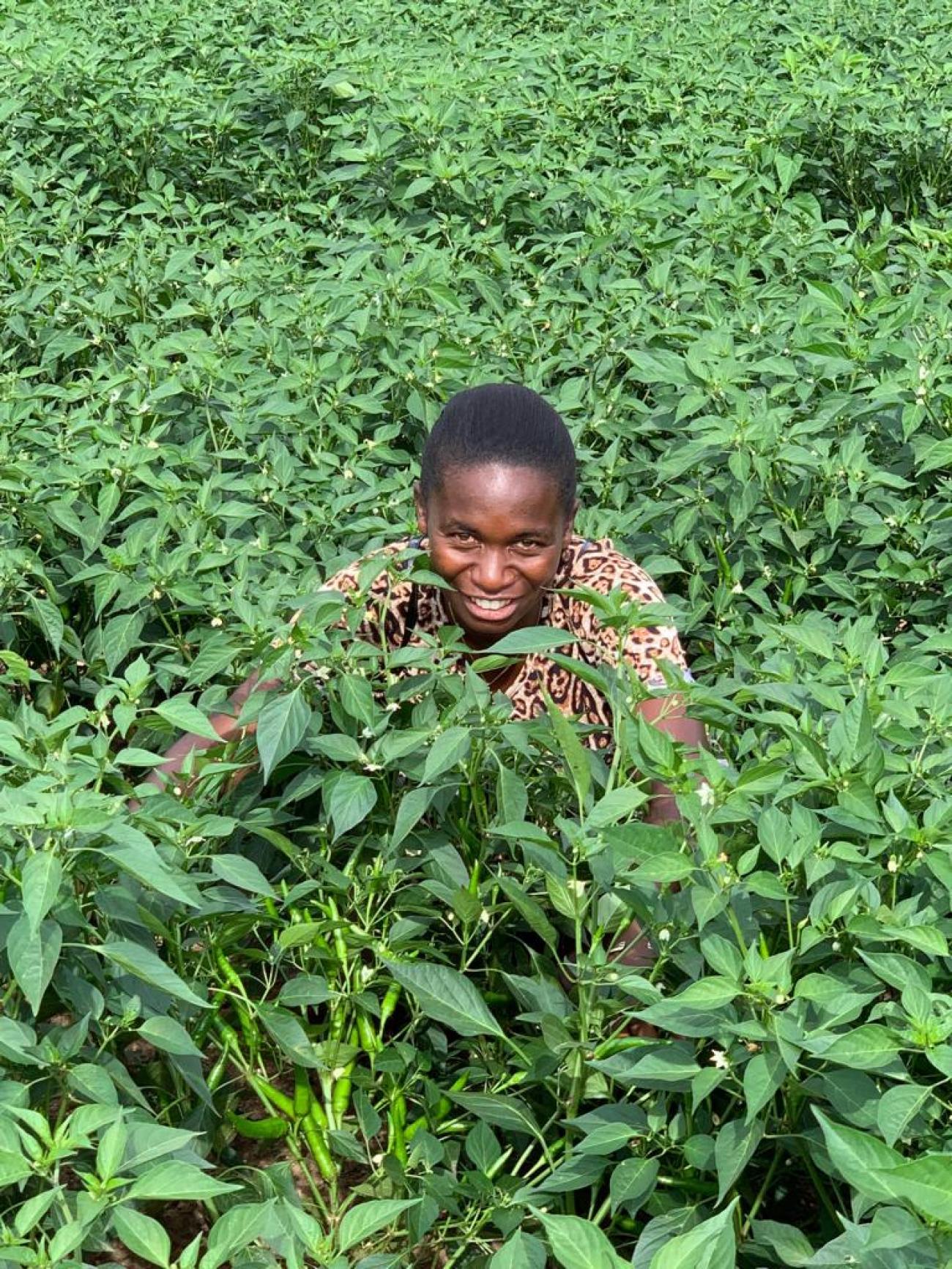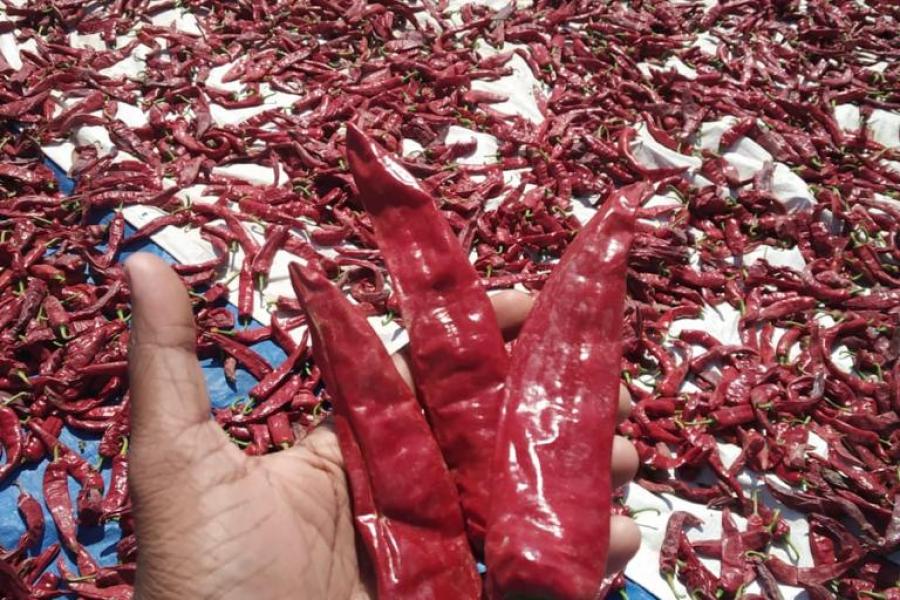ITC ‘ups the ante’ here in Rwanda: SITA

SITA, a project of the International Trade Centre (ITC), has been present here in Rwanda since 2015; recently though, actions are being stepped up a gear.
ITC is the joint agency of the World Trade Organization (WTO) and the UN. It’s fully dedicated to supporting the “internationalization” of small- and medium-sized enterprises (SMEs) with a focus on expanding trade opportunities in order to sustainable development.
One of ITC’s main activities in Rwanda is an initiative called SITA: Supporting Indian Trade and Investment for Africa. SITA is all about South-South Co-operation:
“This project is south-south cooperation in action. It’s about partnering with India’s emerging economy in order to get East African countries - like Rwanda! - producing higher value exports.”
- Devaiah Allapanda Kushalappa, ITC Programme Officer to Rwanda.
The project started in 2014 with a Memorandum of Understanding between the UK’s Department for International Development (DFID)[1] - the donors - and ITC, who are the implementers of the project.
Since then, ITC have been working with the Government of Rwanda (via the National Agriculture Export Development Board; NAEB) and Indian partners to develop Rwanda’s spices sector. With similar developments taking place in neighboring countries, the crop which is taking off in Rwanda is chili.

Why chili? Why spices?
Small-scale farmers in Rwanda, as in many developing countries, are prone to finding themselves in a sort of low-income trap, whereby traditional crops are subject to price volatility in local markets, as well as farther afield.
Shifting cultivation into higher-value products and tapping into export markets for niche products (rather than bulk commodities) offers potential to – first of all - increased incomes.
Secondly, such a shift can reduce exposure to price volatility for individual crops.
SITA has mitigated the above risks by bringing the market directly to the farmers in the form of contract farming, whereby the farmer receives a guaranteed fair price for their produce; meanwhile, the company involved also offers technical guidance and expertise.
Thirdly, some higher-value products also offer potential for processing; if processing can take place in Rwanda, it allows communities to capture more value from their crops, whilst also further insulating them from sharp swings in prices.
Chili grows well here in Rwanda. With the right agro-climatic conditions, high soil fertility, and thanks to SITA, chili is already delivering on two of these key benefits: bigger incomes for farmers and greater export diversification.
What started off as a four-hectare pilot in 2016 has now grown to 104 hectares; looking ahead, it has the potential for a tenfold scale-up in the next year.
With time, the goal is for processing is to also be able to set up shop here. Instead of being sent back to India to be processed, spices can be processed here in Rwanda, leading to job creation through FDI (Foreign Direct Investment). Thanks to AGOA and EBA legislation, this is a win-win scenario, since companies importing goods processed in East Africa will then benefit from reduced tariffs on arrival in USA and EU.
What does this look like in practice?
SITA has been working with farmers in the country’s Eastern Province to de-risk efforts to diversify into high-value chili varieties.
To address challenges related to growing unfamiliar crops, ITC brought in Indian spices experts to train farmers on every step of chili production. This included developing a ‘Package of Practices’ covering all activities, from nursery to harvest, post-harvest. It also featured integrated Fertiliser and Pest Management.
To pre-empt the risk that the new chilies would find no buyers, ITC facilitated a buy-back arrangement with a South Indian spice extraction company specializing in food flavouring and colouring. The company supplied seeds to grow red chilies that it wanted to import from Rwanda; experts from the company also participated in the training activities. The buy-back arrangements sought to provide security and confidence to both the farmers and the buyer.
To reduce the chances that the smallholders’ chilies would fail to reach export markets in India and elsewhere because of their unfamiliarity with trade-related logistics procedures,
ITC hand held Rwandan producers with regard to: export documentation, container packing and fumigation, and about working with shipping companies
[1] DFID: leads the Government of the United Kingdom’s efforts to fight extreme poverty, deliver the SDGs and tackle global challenges. Promoting economic development and prosperity in developing countries is a key priority for DFID and includes the creation of sustainable jobs and livelihoods, in particular for women and young people.
Info about SITA:
SITA is an initiative being carried out by ITC in 5 East African countries- Kenya, Uganda, Tanzania, Ethiopia and Rwanda. The objective is to increase the value of business transactions between India and these selected African countries with the ultimate objective to create jobs and income opportunities.
Project timeline:

Project implementation phase outputs:
- Investment linkages between India and East Africa facilitated;
- Trade linkages among East African and Indian companies developed;
- Market/Value chain intelligence and analytical capacities of East African actors improved;
- Operational efficiency of companies and marketability of products and services enhanced;
- Trade and investment support institutions strengthened; and
- Improved awareness of trade and investment opportunities/obstacles and capacity to address business and investment constraints.
Sectors:
- Pulses
- Sunflower Oil
- Spices
- Textile and Apparel
- Leather
Strategy:
The objective will be achieved by enabling access to India’s market and facilitating investment and transfer of Indian knowledge, expertise and technology to East Africa by:
- Promoting public-private dialogue and partnerships;
- Improving capacities of East African companies and TSIs; and
- Creating business linkages.
Who benefits?
SITA is a win-win, benefitting not only East African businesses exporting to India, but also Indian companies importing from or investing in Africa and national trade and investment support institutions (TISIs). SITA is operational in the following countries:
- India
- Ethiopia
- Kenya
- Uganda
- Rwanda
- Tanzania
Expected results:
- Improved business environment fostered through public-private dialogue and partnerships;
- Improved business-development services provided by regional and national TISIs;
- Enhanced competitiveness of East African businesses;
- Greater export flows from East Africa to India; and
- Increased investments, knowledge and technology transfer from India to East Africa.
Why SITA?
Despite an enormous untapped potential for trade expansion between India and Africa, data reveal that a limited number of products are currently being traded. India is well-positioned as a partner to improve the productive and export capacities of African partner countries. With the growing importance of South-South cooperation, India’s expertise can be leveraged to build trade capacities in African partner countries through the sharing of knowledge, technology and lessons learnt.





